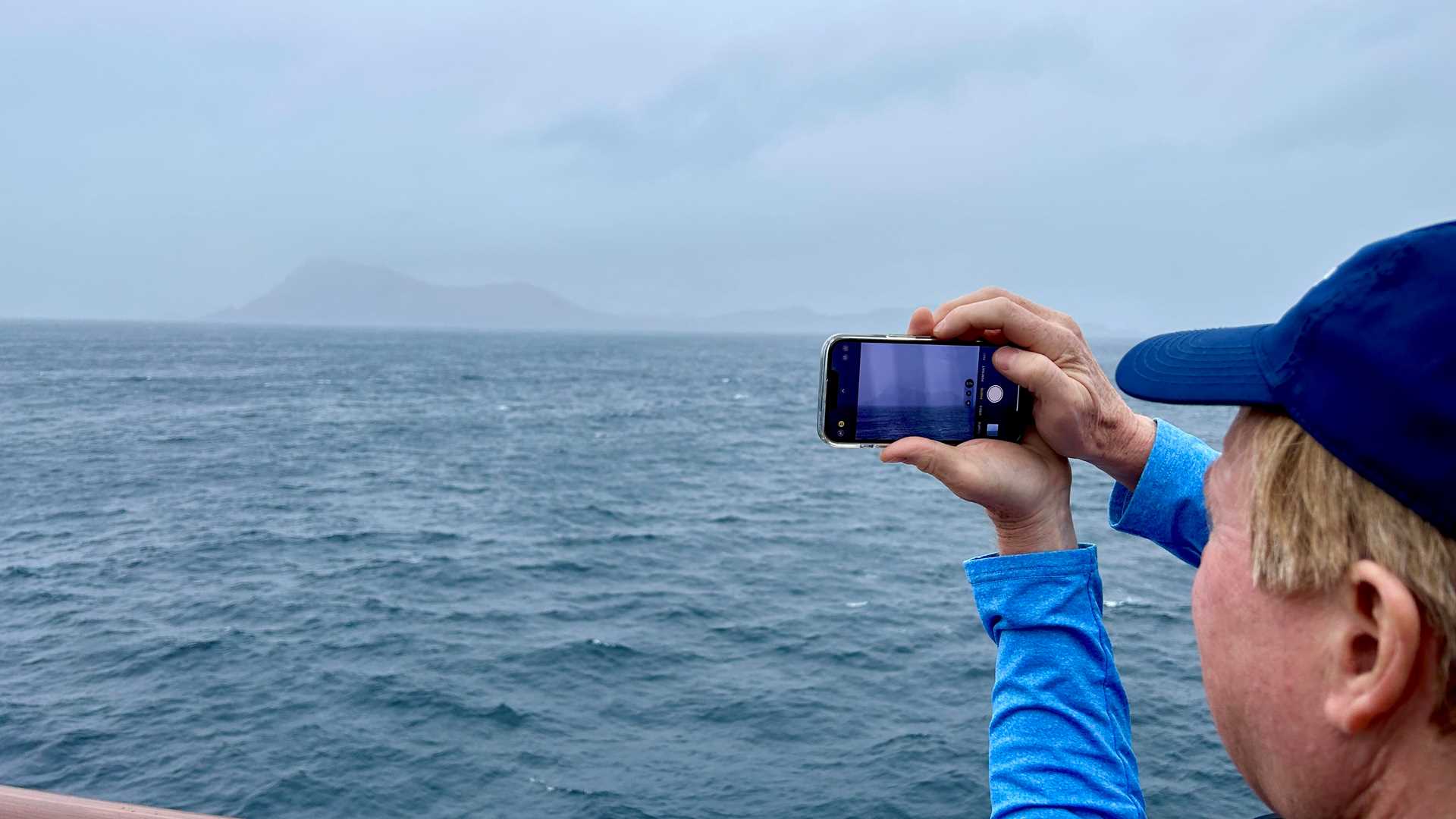Today is our second day sailing through the Drake Passage en route to Ushuaia. We crossed the Antarctic Circumpolar Current in the middle of the evening. This is the point in the journey where one might say we have officially left the biogeographical region of Antarctica. In other words, the biology, including marine life and birds, is very different now that we are north of the ACC. The ACC is a current that circumnavigates the entire continent, creating a boundary between the warmer, more northern Sub-Antarctic waters and the colder Antarctic ones. This barrier occludes the warmer air temperatures as well, giving rise to the climate we experienced for the last week or so. Antarctica has been experiencing this climate since the continent completely broke away from South America about 35 million years ago, allowing the Circumpolar Current to develop.
We were fortunate to sail close to Cape Horn. Although it was foggy, many guests were out on deck to learn about the lighthouse and the albatross statue that commemorates sailors lost at sea. As we traveled into the Beagle Channel, we began to see more black-browed albatrosses and not as many wandering or royal albatrosses. We also observed Magellanic penguins; we hadn’t seen them since the start of the trip. Slowly, Ushuaia came into view, giving us all a reason to pause and truly rejoice about the incredible journey we just experienced.
It's always so interesting to play a part in an expedition like this one. The beginning feels like such a long time ago. Simultaneously, it feels as if we had just left the dock to head east in the Beagle and south through the Drake. As a group, we experienced the Drake Passage twice: the east side of the peninsula and the Weddell Sea and the west side of the peninsula, including Paradise and Neko Harbours and a stunning sunset in the Lemaire Channel. We passed tremendous tabular icebergs as well as other bergs that varied in size from tiny bits of brash ice to huge, towering domes and pinnacles of ice. We observed numerous mammals, such as humpback whales, Weddell and leopard seals, three penguin species on the peninsula (gentoo, chinstrap, and Adelie), and many other seabirds, including petrels, albatrosses, and shearwaters.
The landscapes of Antarctica are unlike any other! Crossing the Drake gave us time to rejoice about how fortunate we were to witness the grandeur of a place so unique to the planet: a place with a continental glacier that covers 98% of the continent, a place that has captured the imaginations and hearts of countless explorers, even the ones who never make it here! It’s a place we all feel so fortunate to have had the opportunity to visit. We relived some of our incredible experiences as we viewed the video chronicle and the guest slideshow. We listened to the captain share a bit about his experiences as he thanked his incredible crew.
As we approached Ushuaia, our sentiments were expressed in so many ways. Some people actively engaged in discussion, and others made images to capture memories to share with friends, family, and other loved ones. Some stood slightly apart from the rest, watching calmly as we sailed past the beautiful landscape. No matter how one spent these last few hours of the trip, it’s safe to say we all shared a wonderful experience, one that will stay with us for the rest of our lives!







